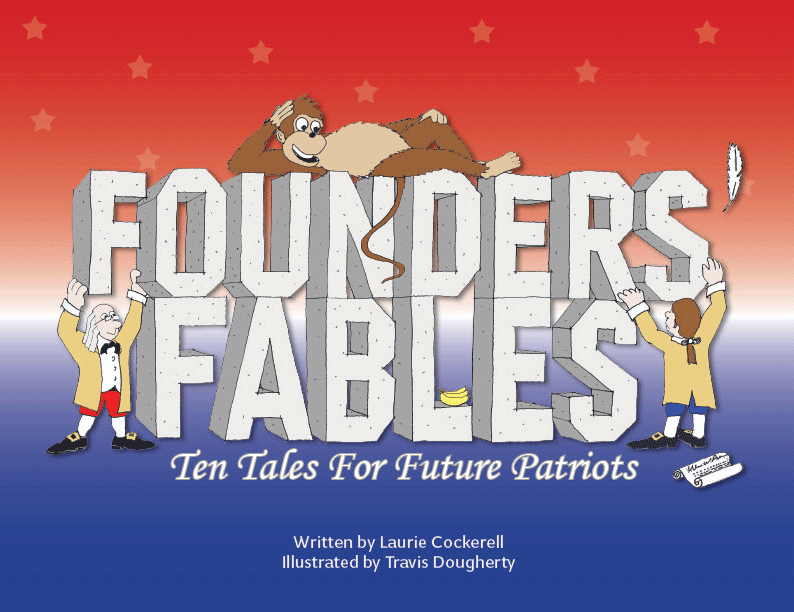
Founders’ Fables
This is a brightly colored and aesthetically appealing book. It is based on the admirable premise that children should learn about America’s founding ideals.
The fables (poems) are imaginative and the illustrations are clever and well drawn. However, the match between quotes, fables and discussion questions is uneven and may distract from the points that are intended.
The book begins with a short (one paragraph) biography of the founders whose quotations serve as introduction to each fable (John Locke is included in the list. Calling him a founder is not strictly accurate, although the text explains that his ideas were incorporated.)
A “What Do You Think†(discussion) page follows each fable? It is divided into a few questions each for younger and older children.
The first fable is introduced by a quote from Jefferson, “It is incumbent on each generation to pay its own debt as it goes.â€
The fable is about ducks voting to assess future generations to build a water park.
- Q 1 for younger children:Â Have you ever bought something with your own money? What was it? How much did it cost?
Perhaps a more focused set of questions to prime their thinking would have been. “Have you ever saved for something you wanted?†  Have you ever borrowed money from your parents to buy something? How did you pay it back?
- Q2 for older children is a series of three questions about how government takes on debt. One of these asks, “How do you feel about this.†This reviewer does not mean to be overly critical, but this is a pet peeve. How the child feels about an issue is not a relevant inquiry; notwithstanding that it is a classroom favorite these days. The purpose of inquiry is to get children to think, to use facts as the basis for discussion and opinion.
Fable number three is introduced by a quote from George Washington, “Few men have the virtue to withstand the highest bidder.â€
It is a fable about barnyard animals voting to free Tom Turkey so the farmer won’t eat him. When the vote is tied, the pigs offer to change their vote to “yes†if all the animals pay them a fee.
It’s a cute poem and the connection to “pork†is clever, but the problem is that it conveys a mixed message. Tom Turkey belongs to the farmer so freeing the turkey amounts to thievery! A perceptive older child could raise this issue and the whole point of the lesson would be lost.
Fable six is introduced by a quote from Thomas Paine, “Each man wishes to pursue his occupation, and to enjoy the fruits of his labors and the produce of his property in peace and safety, and with the least possible expense.â€
What follows is a story about a dog with “itchy fleas’ that leaves his home to go where he can be free of fleas. Unfortunately, the analogy between the fable and the quote is weak at best and will likely be lost on young children (who tend to be very literal) and questioned by perceptive older children, again diverting from the point to be made.
Questions on the discussion page for older children are about outsourcing, excessive government regulation, and encouraging businesses to open and stay in communities. First of all, dogs are cared for by owners. The fleas are there because the dog was not well cared for, not because they were imposed upon him. Dogs are not free agents. They do not produce anything either to their own benefit or to the benefit of anyone else.
Fable number nine is prefaced by another quote from Jefferson, “The policy of the American government is to leave their citizens free, neither restraining nor aiding them in their pursuits.†The quote and the fable are a poor match.
What follows is a fable about a “ruler†controlling what radio programs the animals will hear. The discussion questions are basically about free speech.
A better fit would have been the First Amendment or a Founder’s quote that focuses on free speech.
This book could certainly be used by parents to teach children some of the founding principles. It is a worthy undertaking and addresses a need. However, four out of the ten fables are either not as focused on the topic as they might be, or convey a mixed message. The questions for older students also assume a level of information they may, or may not have. Parents would be well advised to determine what their children’s knowledge level is before beginning.

 The posts are coming!
The posts are coming!

0 comments
Kick things off by filling out the form below.
Leave a Comment